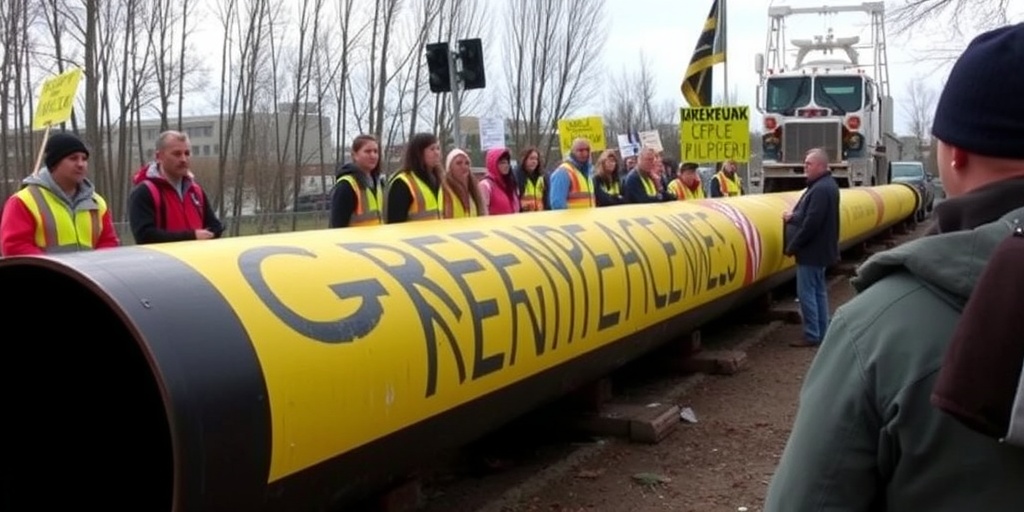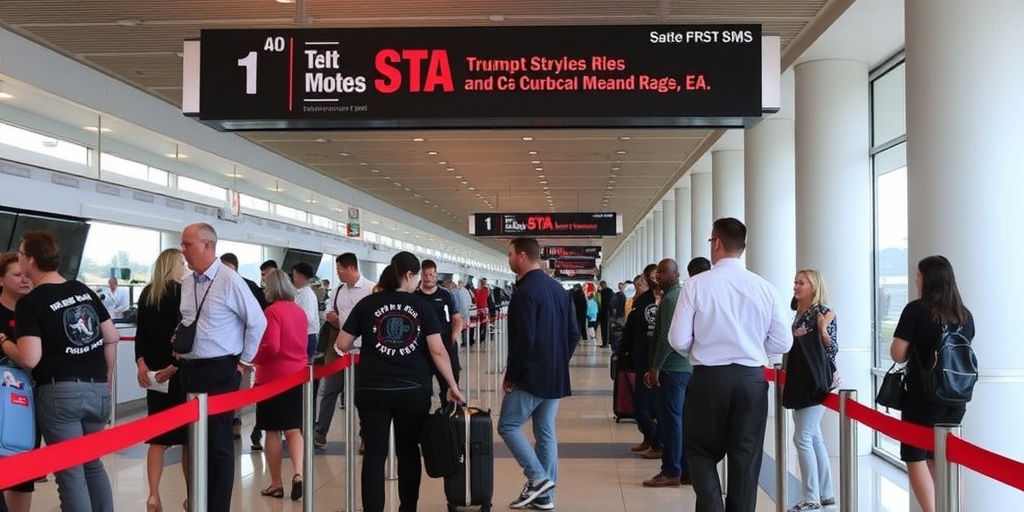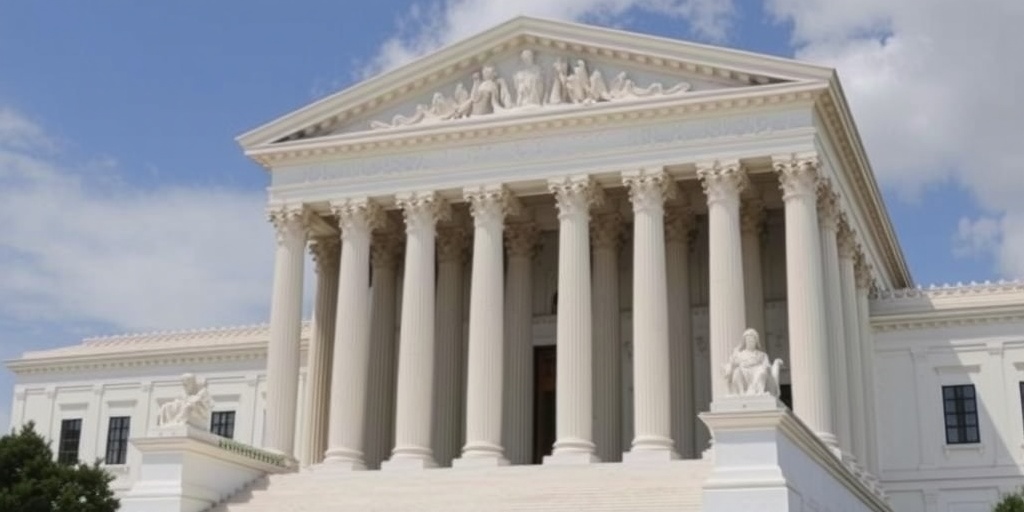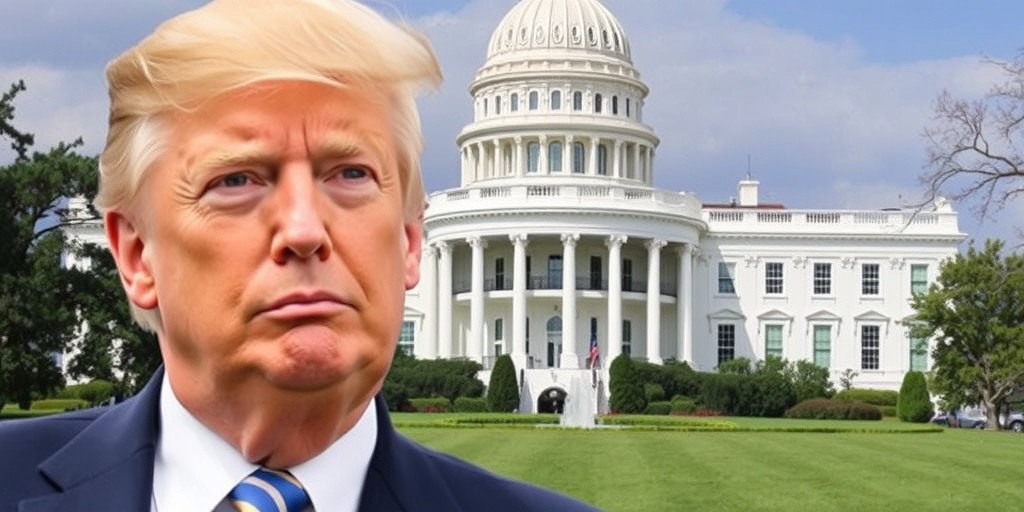Now Reading: Trial Begins Over Greenpeace’s Involvement in Pipeline Protest
-
01
Trial Begins Over Greenpeace’s Involvement in Pipeline Protest
Trial Begins Over Greenpeace’s Involvement in Pipeline Protest

Trial Begins in High-Stakes Case Involving Greenpeace and Energy Transfer Over Dakota Access Pipeline Protests
In a North Dakota courtroom, lawyers representing Energy Transfer, the company behind the controversial Dakota Access Pipeline, and Greenpeace, a leading environmental organization, are engaged in a significant civil trial that has the potential to drive the environmental group toward financial ruin. The proceedings commenced Wednesday morning in a small county courthouse located in Mandan, North Dakota, where legal teams presented their opening arguments over the charges brought forth by Energy Transfer against Greenpeace.
The crux of the case lies in the role that Greenpeace allegedly played during the extensive protests against the Dakota Access Pipeline, which transports crude oil from North Dakota to a transfer point in Illinois. The protests, marked by heightened tensions and legal disputes, began nearly a decade ago, particularly intensifying in 2016 and 2017, as activists, environmentalists, and the Standing Rock Sioux Tribe fought against the pipeline’s construction, claiming it endangered their water supply and sacred sites.
Energy Transfer contends that it incurred significant financial losses, amounting to $300 million, as a direct consequence of Greenpeace’s actions. The company asserts that the environmental group not only organized but also funded protests that resulted in construction delays, security expenditures, and costly public relations efforts. Lead attorney for Energy Transfer, Trey Cox, emphasized the seriousness of the allegations in his opening statement, describing the trial as a “day of reckoning” for Greenpeace. Cox expressed confidence that the jury would be presented with substantial evidence showcasing Greenpeace’s planned involvement in inciting unrest against the pipeline’s construction.
In response, Everett Jack Jr., the chief lawyer representing Greenpeace, challenged Energy Transfer’s narrative, asserting that Greenpeace played a marginal role in the large-scale demonstrations, which attracted an estimated 100,000 individuals to the protest site near the Standing Rock Sioux Reservation. Jack presented a timeline to counter the claims made by Energy Transfer, stating that the protests had already escalated into volatile confrontations between demonstrators and law enforcement before Greenpeace became involved.
The Standing Rock Sioux Tribe’s opposition to the Dakota Access Pipeline began in the spring of 2016 when they filed lawsuits aimed at preventing the pipeline’s operations, particularly around portions running under Lake Oahe on federal land. As protests swelled, notable incidents of conflict occurred, one of which involved private security forces using dogs against protesters. This confrontation occurred on September 3, 2016, before Greenpeace had any presence at the site. Jack noted that Greenpeace’s involvement came only two days later when two of their staff members arrived to provide supplies, including a solar truck to support the protesters.
Jack emphasized Greenpeace’s commitment to nonviolence and framed their involvement as efforts to de-escalate tensions and assist the demonstrators with resources like tents and training. He argued before the jury that no evidence substantiates claims that Greenpeace was responsible for any disorder or violence during the protests.
Citing internal communications from Greenpeace, Cox, in his opening arguments, sought to show that the organization had directly impacted Energy Transfer’s financial standing. He referenced a letter addressed to international lenders, drafted by BankTrack, an environmental advocacy group based in the Netherlands, which encouraged banks to withdraw financing for the Dakota Access Pipeline. Cox claimed that this campaign led to increased difficulties for Energy Transfer in securing loans and refinancing their project at favorable rates. However, Jack maintained that there was no documented evidence to suggest that financial institutions acted upon the letter, which had over 500 signatory groups attached to it.
Throughout jury selection, it was apparent that many of the prospective jurors had personal or familial connections to the oil and gas industry or local law enforcement, which could have implications for the trial’s outcome considering the region’s heavy dependency on these sectors.
Ultimately, the jury consists of eight women and three men, including two alternates. Lawyers representing Greenpeace International, headquartered in the Netherlands, and the Greenpeace Fund based in Washington, also addressed the court, asserting that their respective organizations were distinct and had no operational involvement in the protests being contested.
As the trial unfolds, with estimates suggesting a duration of five weeks, it not only signifies a face-off between legal principles and environmental activism but potentially sets a precedence for how civil liberties and corporate interests interact in contemporary society. The stakes are high as the world watches the outcome of this landmark case that challenges the boundaries of protest, corporate accountability, and environmental protection.
Stay Informed With the Latest & Most Important News
Previous Post
Next Post
-
 01New technology breakthrough has everyone talking right now
01New technology breakthrough has everyone talking right now -
 02Unbelievable life hack everyone needs to try today
02Unbelievable life hack everyone needs to try today -
 03Fascinating discovery found buried deep beneath the ocean
03Fascinating discovery found buried deep beneath the ocean -
 04Man invents genius device that solves everyday problems
04Man invents genius device that solves everyday problems -
 05Shocking discovery that changes what we know forever
05Shocking discovery that changes what we know forever -
 06Internet goes wild over celebrity’s unexpected fashion choice
06Internet goes wild over celebrity’s unexpected fashion choice -
 07Rare animal sighting stuns scientists and wildlife lovers
07Rare animal sighting stuns scientists and wildlife lovers





















